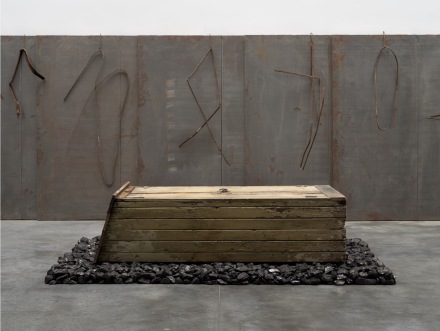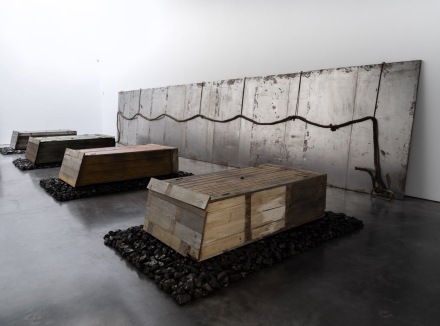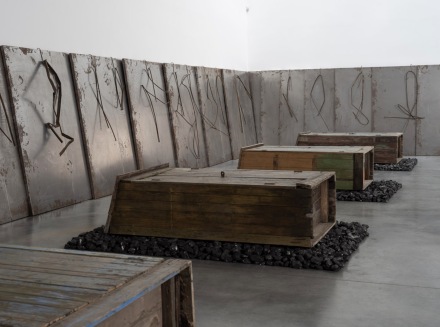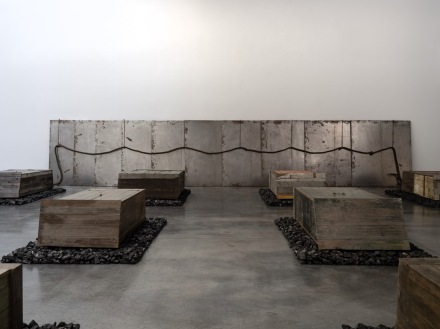
Jannis Kounellis (Installation View), via Gladstone Gallery
This winter, the artist Jannis Kounellis is the subject of an expansive exhibition of work on view at Gladstone Gallery in Chelsea this month, underscoring the artist’s powerful and expressive body of work, and its exploration of violence, loss and pain. Like many of his generation in Europe, Jannis Kounellis (1936 – 2017) experienced war at close quarters throughout his childhood; first during the German Nazi/Italian Fascist occupation [subjugation] of Greece, and then the civil war that erupted in the power vacuum when the occupiers were defeated in 1943. One of the first Cold War conflicts, the war lasted until 1949, when Kounellis was 13 years old.
Jannis Kounellis (Installation View), via Gladstone Gallery
The show here takes great pains to make the abstraction of war a foregrounding element, with a press release that makes express ties between the Greece of Kounellis’s youth and the landscape of contemporary America, where social uprisings and state-sanctioned violence seem to be growing in regularity. “Kounellis always felt it was a delusion to imagine that we were past war, that we are post-war because war has never left our side. Rather, it is like a series of links in a chain, from one hand to another, from this war to that war – we find ourselves always connected to war,” the release states.

Jannis Kounellis (Installation View), via Gladstone Gallery
The show here takes this prompt and turns the artist’s work into a stark statement against war and violence, while managing to bring the emotional heft and gravity of these words to the foreground. The gallery is dotted with what appear as a series of coffins, yet on closer examination, appear to be toolsheds or doorways to a small cabin, turning this moment of mourning and loss into a moment of reflection and understanding. These are not bodies laid to rest, but the symbols of a peaceful domesticity, the language of he everyday laid low under the language of violence. Kounellis is not laying bodies to rest so much as he is the symbols of daily life and the sense of normality that comes with it. Arrayed under twisted metal and stark slabs of concrete, the show seems to underscore not so much the sense of lives lost, but of a way of life itself.
The show closes February 4th.

Jannis Kounellis (Installation View), via Gladstone Gallery
– D. Creahan
Read more:
Kounellis at Gladstone [Exhibition Site]



